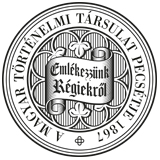Századok – 2013
KÖZLEMÉNYEK - Blazovich László: Az öröklési jog a középkori jogkönyvekben és a városi gyakorlatban II/411
432 BLAZOVICH LÁSZLÓ LAW OF INHERITANCE IN THE MEDIEVAL LAW BOOKS AND IN THE URBAN PRACTICE by László Blazovich (Summary) Since property and its practical manifestations (movable, immovable), as well its ownership, and one form of its transfer, namely inheritance, constitute one of the foundations of any human society, medieval lawbooks contain as a matter of fact prescriptions with regard to them. In the first part of the present study the author examines the rules of inheritance in the Saxon and Swabian Mirrors and in the Summa legum Raymundi. He comes to the conclusion that the forms of inheritance exclusively based on kinship, which dominates the Saxon Mirror, were first modified by the Church with the introduction of the part of the soul, while later it was the emergence of testamentary alongside legal inheritance which broke a new hole in the wall of closed kinship inheritance. Regulations relating to the latter two already appear in the Swabian Mirror. Raymundus Parthenopeis, on the other hand, prescribed for urban dwellers four forms of testamentary inheritance alongside the legal one. These forms, as is proved by the examples cited, all appear in the testaments prepared at Pressburg and Sopron in the 15th and 16th centuries, where the burghers (male and female alike) could dispose of their property independently of the town's lord, the king. Their free will could only be limited by their family, kin and the town itself. The situation was different in the settlements under private lordship, where the tenant, as a sub-owner compared to the owner-in-chief, the lord, could only dispose of the right to use the land, and it was all he could bequeathe to his heirs. The hierarchy of subjection between lord and peasant had several intermediary shades, and the same was true in the case of peasant-burghers and their lords in the market towns, for which the author cites several examples.
